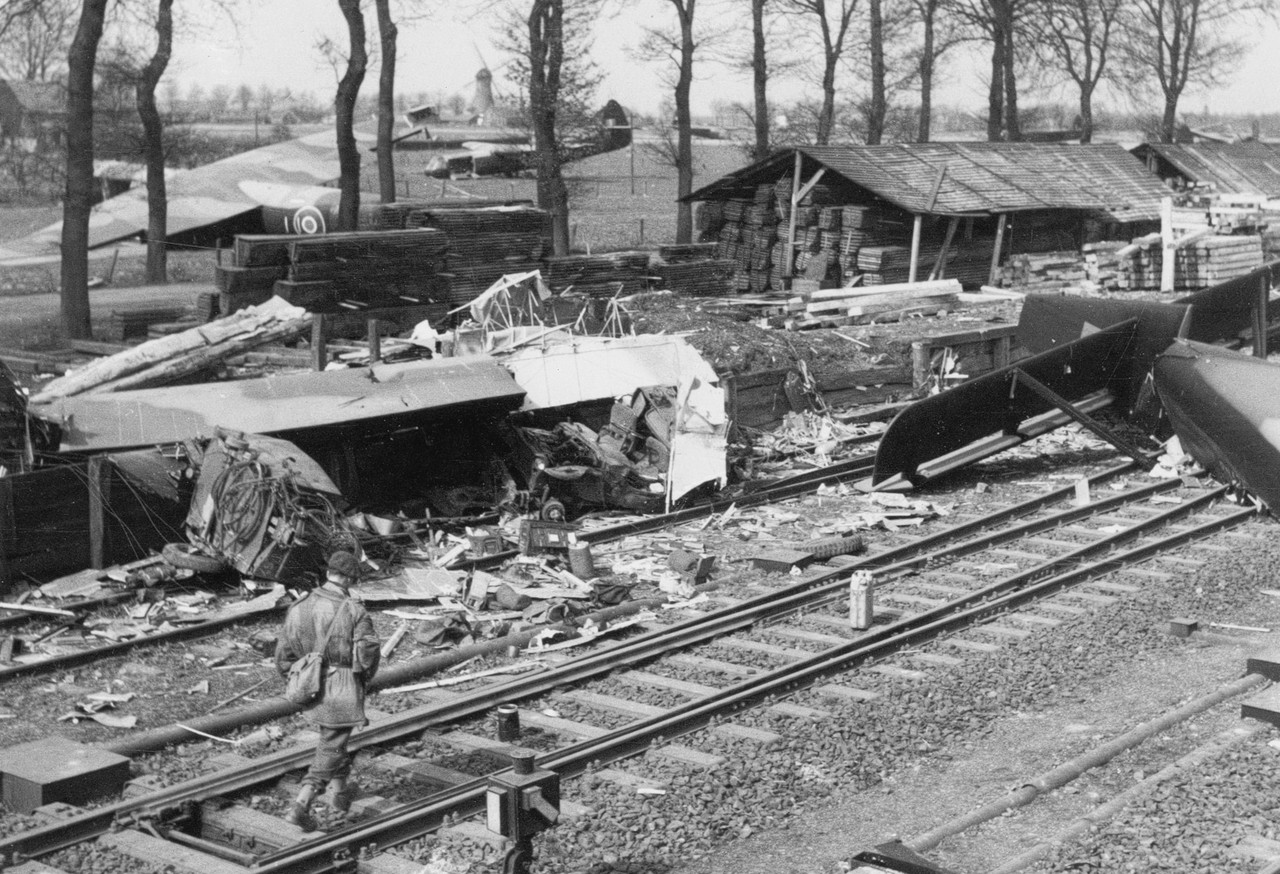Hundreds of gliders are towed into the target area by tow planes and detached there. On board each British Horsa glider are 25 soldiers, ready to go into battle immediately after landing. The British 2nd Battalion of the Oxfordshire and Buckinghamshire Light Infantry has a special assignment: 800 soldiers are to land around the station of Hamminkeln near the small river Issel and rapidly capture a couple of bridges. But there is a lot of German anti-aircraft artillery ready in that area.
Aboard a glider, 20-year-old Lance-Corporal Godfrey Yardley approaches the landing zone. He says: ‘We flew in front and got the full brunt of the anti-aircraft guns. During the descent, we had to go through heavy flank fire; many men were killed in the first few minutes. The steering instruments were hit, and we overshot the landing zone, the railway line and the Issel and popped straight into a forest edge. Yardley and his uninjured comrades managed to break through under fire to the Issel and their own troops.
Their battalion lost half its men: about 300 wounded and 104 dead. Still, the airborne operation ‘Varsity’ is successful. It opens the way for the Allied British troops to advance eastwards with equipment via the Issel bridges.
